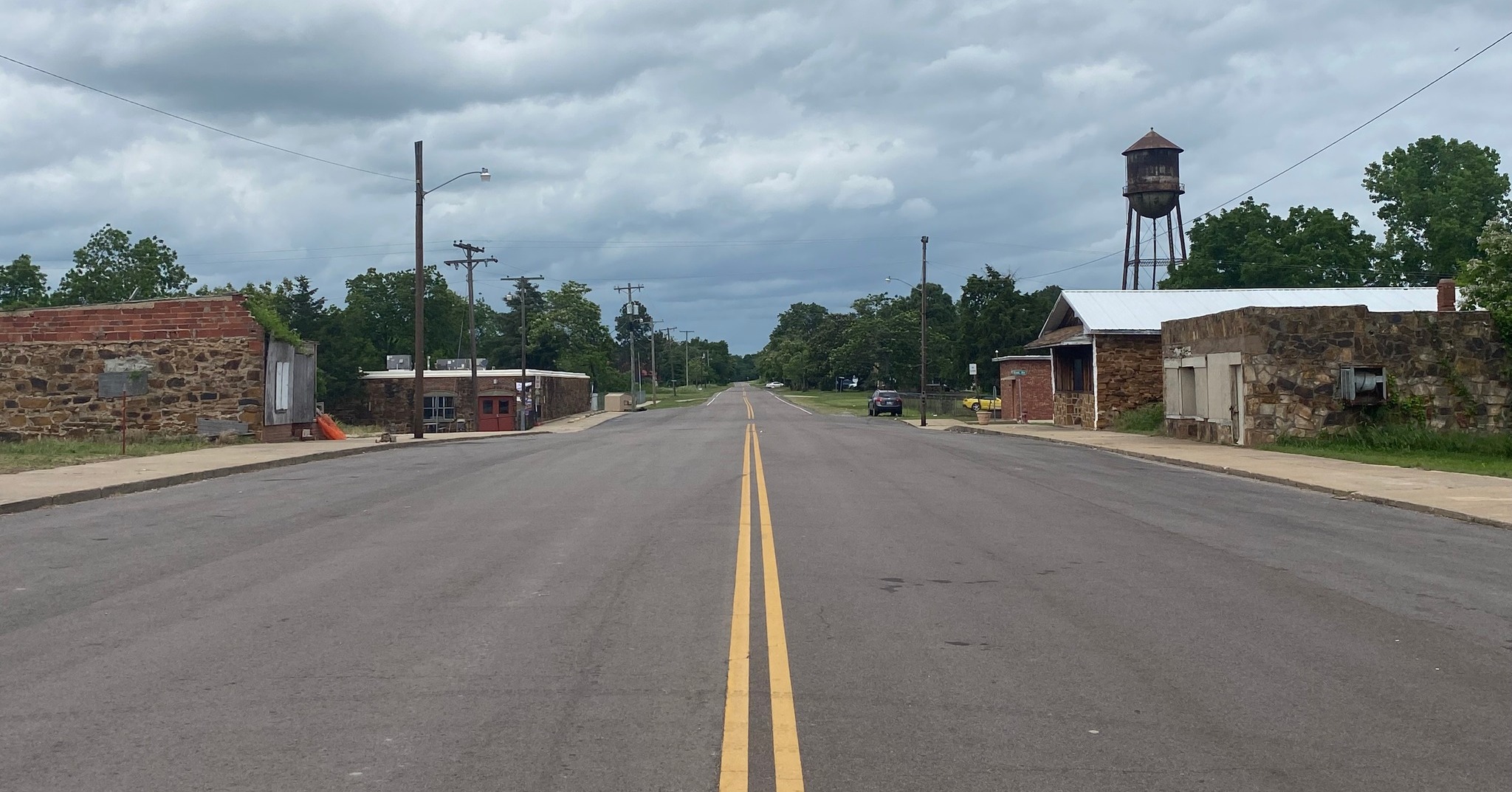
03 Jun FROM THE ROAD
FROM THE ROAD
Yesterday I was in Boley Oklahoma visiting a client that is being held at the John H. Lilley Correctional facility. As you drive up 62 Highway out of Okemah it is the bright blue water tower that serves the prison that first greets you on your approach to one of Oklahoma’s greatest historic treasures, the Town of Boley.
Boley was established as an African-American settlement and at one time was one of the most successful black towns in the United States. It served as a model of post-reconstruction negro capitalism and success. The campus I was visiting yesterday was first erected as a sanitarium for the treatment of African-Americans afflicted with Tuberculosis.
In 1927 it was reestablished as a school for African-American boys that were labeled delinquent or incorrigible. It’s important to remember that this is also during a time in our history as a state and a nation that young African-American boys were considered delinquent and incorrigible, and in the eyes of far too many, deserving of death by lynching if they just happened to look at a white girl, or not refer to a white man as “Sir”.
The man that established the school was John H. Lilley, a teacher who would become the school’s first superintendent. Lilley is described on the Oklahoma DOC website as follows: “JLCC I named for the school’s first superintendent, John H. Lilley whose dedication to, and love for, its children was widely known.” Lilley died in a car crash in 1933 and is buried near the entrance.
Listen to how the school is described in a State Commission of Charities and Corrections report from around the time the school was established: “A school building is badly needed, also a workshop or an Industrial Building. There is every need thereof Vocational Education if we are to help these boys so that they will be prepared to make an honest living when they are released from school.”
I also found this article from The Okemah Daily Leader circa. April 1946 and it described conditions at the school as excited and proud writing: “Upon arriving at the institution each boy is permitted to choose the department in which he would like to work. It is the aim of each department to make each boy fit to return to society and to arm him with a trade with which to make a justifiable living.”
You can almost see Lilley’s vision for his boy’s school coming into exactly what he hoped for. John Lilley ran a school that likely saved the lives of so many young boys that would have otherwise found themselves in prison or dead and hanging from a tree. In 1964 the school would be integrated and Lilley’s vision for a place of learning and reformation would be extended to boys of every racial make-up, and it would remain that way until 1983.
In 1983 America was changing rapidly. By this point, it had been a decade since President Nixon had first declared a “War on Drugs”. As America was entering an election presidential election cycle, rhetoric over drugs and crime, which we now know were clear dog whistles to white voters in order to gain their vote through fear of a rise of minorities gaining political power and influence, was a major topic among state and local politicians.
Governor George Nigh signed legislation that year to end the school and convert the campus into a prison. Oklahoma was not different from other states in how it ramped up the building of new prisons in the 1980s, which would eventually lead way to the creation of private prisons and the creation of an overall incarceration for-profit complex. Oklahoma would be unique in regard to the fervency that it would incarcerate its citizens over the years and by 2016 lead not just the United States in its rate of incarceration per capita, but the entire world. Statistically speaking Oklahoma would lead the world by significant numbers in its incarceration of women, and impact the regular family unit in the state in ways that it will likely never recover. Nobody has more grandparents or non-biological parents raising children than the state of Oklahoma.
In 1983 when the government in Oklahoma City decided that the boy’s school would be the site of the next state prison facility, the citizens of Boley rejected the proposal. The citizens claimed that the prison would be a blight on their historically significant town. The residents didn’t see anything good that would come from having a prison in their community, and they would be proven correct.
I visited the town of Boley just after my meeting. I drove down the same street that was once lined with mercantile and trade and the everyday buzz of townspeople and dealmakers. Old black and white photos of the town’s former success and pride are not hard to find, even with the most non-descriptive Google search. However, that is not how Boley looks today. I took a picture of the water tower that sways lightly over the main commercial street in Boley, and when compared, stands in stark contrast to the fresh blue paint of the water tower at the prison, just down the road. I stood in the middle of the road on the main commercial street in the town and took a picture in both directions. Not a single car drove up that road during the entire time I stood there. As I stood there and looked around me at the old brick buildings, collapsing in on themselves from neglect, I could still imagine a time when this street was bustling with life and progress.
As I walked to my car, I wondered how Boley, or the whole country for that matter, would be different if John H. Lilley was still the school its first superintendent envisioned nearly a hundred years ago, rather than the cage farm that it is today. The prison may or may not have been the cause of the death of Boley, but this much is true, the despair that floats in the air is of the same quality as that which hangs over McAlester, or Stringtown, or Taft, or anywhere the U.S.A. Places where the razor wire from the local prison glints in the glow of the evening sun.
These monoliths of despair, these brick boxes that separate families and destroy communities are our nation’s blight, yet we just drive by them and give them no more mind than any other non-descript structures that rise and fall on the horizon of America’s highways. I think about John Lilley and the sacrifices he must have made to first get the school going and then to run it with such noble goals, only to see what it has become. I wonder what he would have to say about the sign that bears his name on a building surrounded by razor wire and soaked with the stench of despair rather than the fresh scent of growth and learning. This was an institution with reform, education, and training as its mission. Now, it is a part of the Oklahoma Department of Corrections, a department that wears its own title as a lie. There is no correction that goes on here or in any facility under the control of our state’s largest and most funded agency.
This is Oklahoma, and we put an educator’s name on a prison because we thought that would be an honor. I just cannot believe John Lilley would be proud of the place he is buried, not since 1983 anyway.



Sorry, the comment form is closed at this time.